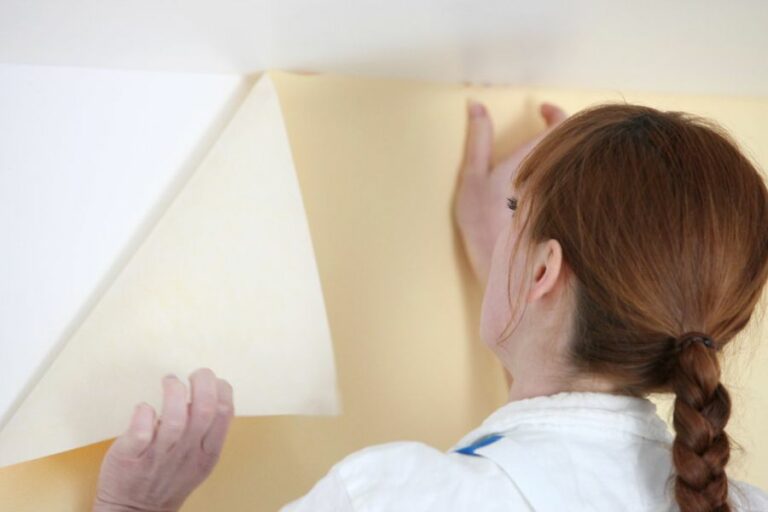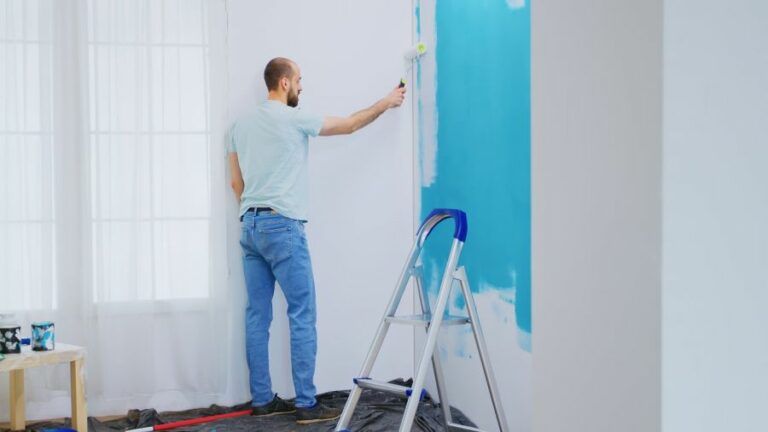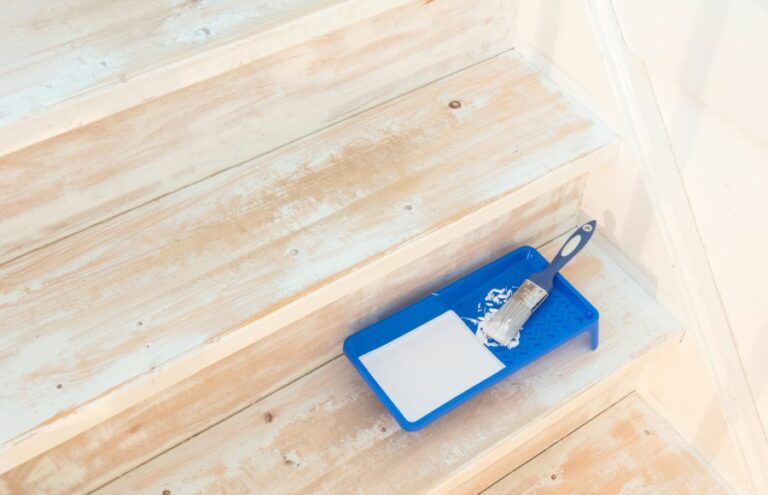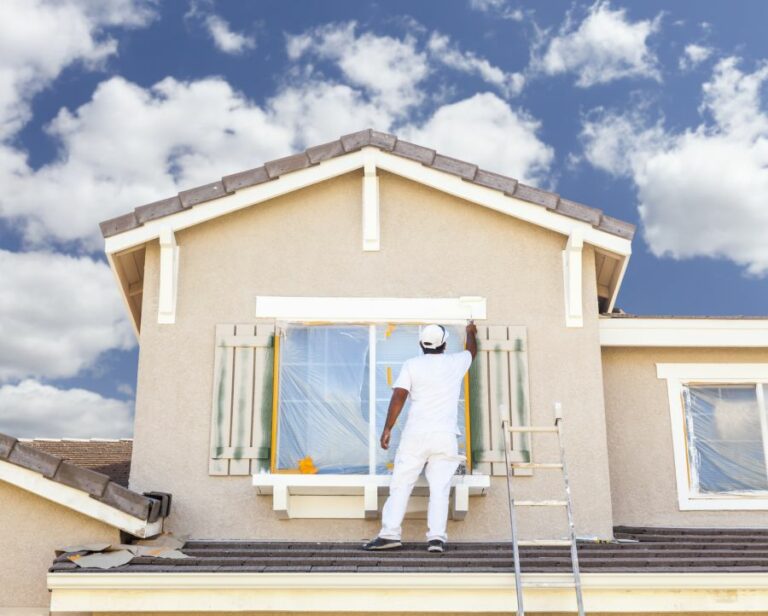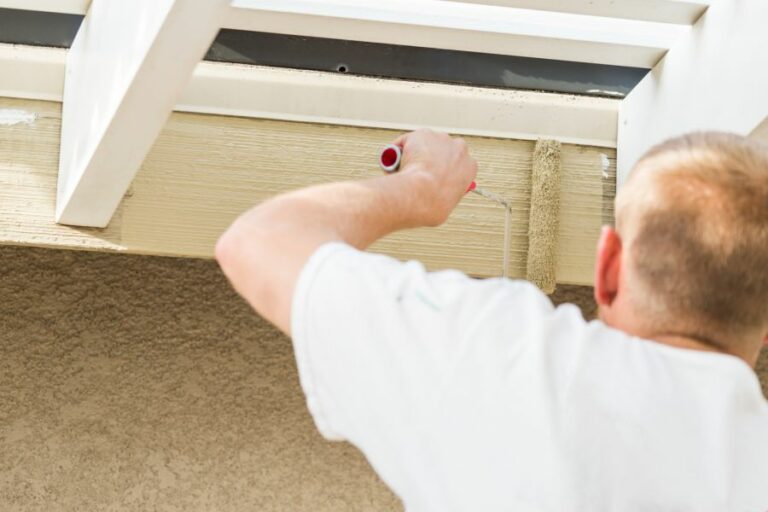Unlock Paint Adhesion Success Through Profiling
Are you struggling with paint adhesion issues and looking for reliable solutions? Look no further! We have the key to unlocking paint adhesion success and ensuring a flawless finish for your materials. By understanding the critical role of profiling in achieving optimal adhesion, we are confident that we can help you overcome any challenges and take your painting projects to the next level.
Unlock paint adhesion success through profiling:
Unlock paint adhesion success through profiling by measuring and analyzing surface characteristics such as roughness, cleanliness, and chemical composition. Surface profiling aids in determining the ideal roughness, identifying contaminants for proper cleaning, and selecting appropriate chemical treatments for optimal paint adhesion and overall product performance. Use various profiling techniques, tools, and expert recommendations to ensure excellence in paint adhesion.

Unlock the secret to impeccable paint adhesion by mastering profiling techniques. Learn the crucial role of surface profiling, explore various methods, and discover industry tips to enhance your paint job’s durability and appearance. Read on to transform your paint projects like never before!
Contents
- 1 Achieve Paint Adhesion Excellence with Profiling Techniques
- 2 Enhancing Paint Adhesion: Effective Methods Revealed
- 3 Discover the Ultimate Paint Adhesion Test for Maximum Results
- 4 Key Influences on Paint Adhesion: Crucial Factors to Consider
- 5 Mastering Paint Adhesion Testing: A Comprehensive Guide
Achieve Paint Adhesion Excellence with Profiling Techniques
Achieving long-lasting, high-quality paint adhesion can be challenging, but it is essential for a wide range of industries, from automotive manufacturing to aerospace and beyond. Irregular paint adhesion can lead to reduced product durability and increased maintenance costs.
So, how can you optimize paint adhesion quality in your project? The answer lies in profiling.
• The Importance of Surface Profiling
Surface profiling refers to the process of measuring and analyzing the surface characteristics of materials to identify the most appropriate approach for ensuring optimal paint adhesion. These characteristics can include surface roughness, cleanliness, and chemical composition.
Understanding the role of surface profiling in paint adhesion is critical to achieving long-lasting and reliable results.
– Surface Roughness and Paint Adhesion
One of the most important factors in determining paint adhesion success is surface roughness. A rough surface provides increased surface area, leading to stronger and more durable adhesion of paint layers. Surface profiling can help you to determine the ideal level of roughness for your specific application.
To achieve optimal surface roughness, various abrasion techniques can be utilized, such as sandblasting, grinding, brushing, or chemical etching. Selecting the right method is crucial for maximizing the benefits of profiling and ensuring successful paint adhesion.
– Surface Cleanliness and Paint Adhesion
Ensuring the surface is clean and free from contaminants is critical for successful paint adhesion. Common surface contaminants include grease, oil, dust, and residual chemicals. These contaminants can inhibit the adhesion of paint molecules to the substrate, leading to peeling and reduced durability.
Surface profiling can help to identify the presence of contaminants and inform the proper cleaning techniques. Common methods of cleaning surfaces include chemical processes, such as solvent wiping, and mechanical processes, such as pressure washing or abrasive cleaning.
– Chemical Composition and Paint Adhesion
The chemical composition of the surface material also plays a significant role in the success of paint adhesion. For instance, certain metals can require specific surface treatment techniques, such as phosphating for steel and chromate conversion coating for aluminum.
Surface profiling can help you to identify the appropriate chemical treatments required for your specific material. This knowledge can ensure the highest level of paint adhesion and overall performance of your product.
• Profiling Techniques and Instruments
Numerous profiling techniques and tools exist for evaluating surface characteristics. Some of the most widely used methods include:
- Surface roughness measurement: instruments like profilometers and roughness testers provide quantitative data on surface roughness levels.
- Surface energy measurement: devices like goniometers and tensiometers can evaluate the surface energy of materials, which is indicative of surface cleanliness.
- Chemical analysis: techniques such as X-ray fluorescence (XRF) and energy-dispersive X-ray spectroscopy (EDX) can provide in-depth analysis of the chemical composition of surface materials.
When selecting profiling tools, it’s important to consider the requirements of your specific application and the level of precision needed for accurate results.
• Conclusion: Expert Recommendations for Profiling Success
Based on my experience in the field, here are some recommendations to maximize paint adhesion success through profiling:
- Prioritize surface preparation: Thorough surface preparation, including cleaning and roughening, is essential for successful paint adhesion.
- Tailor profiling techniques to your material: Different materials require specific profiling and surface treatment approaches. Understand the unique needs of your material to ensure optimal adhesion.
- Regularly monitor and maintain surface quality: Periodically check the condition of surfaces, even after the painting process, to maintain adhesion quality and durability.
- Invest in the right instruments: Accurate and reliable profiling tools are a crucial investment for high-quality paint adhesion outcomes.
By adhering to these recommendations and prioritizing profiling in your paint adhesion process, you can unlock the full potential of your products and ensure their longevity, durability, and performance.
For further reading on paint adhesion and surface profiling, consider consulting resources from reputable organizations such as The American Society for Testing and Materials (ASTM) or The Society for Protective Coatings (SSPC).
These organizations offer valuable information and guidelines for paint application, surface preparation, and more.
Enhancing Paint Adhesion: Effective Methods Revealed
Paint adhesion is a critical factor in achieving a smooth, long-lasting, and durable finish on various surfaces. Poor adhesion leads to problems such as peeling, flaking, and reduced paint lifespan.
• Surface Preparation: The Key to Better Adhesion
– Cleaning the Surface
The first step in increasing paint adhesion is ensuring that the surface to be painted is clean and free of dirt, grease, and other contaminants. This can be achieved by washing the surface with a mild detergent solution and water, followed by rinsing with clean water.
For stubborn stains or greasy surfaces, a stronger cleaning solution such as trisodium phosphate (TSP) can be used, following the manufacturer’s instructions.
– Sanding the Surface
Sanding the surface provides mechanical adhesion by creating microscopic ridges and valleys that allow the paint to grip the surface effectively. Use fine-grit sandpaper (180-220 grit) for sanding painted surfaces and medium-grit sandpaper (80-120 grit) for rough or unpainted surfaces.
Remember to sand in the direction of the grain on wood surfaces to avoid scratches. After sanding, wipe the surface with a tack cloth or damp cloth to remove dust and other residuals, ensuring a clean surface for painting.
– Repairing Surface Imperfections
Surface imperfections such as cracks, holes, or dents can affect paint adhesion and the final appearance of the painted surface.
To improve adhesion, repair these imperfections with a relevant filler or patching compound, and then sand the repaired area smoothly, following the same sandpaper grit recommendations mentioned above.
• Choosing the Right Primer
Primers provide a foundation for the topcoat paint, enhancing adhesion and improving the overall appearance and durability of the painted surface. Different surface materials require specific primers for the best results. Here are some primer recommendations based on the surface type:
– Wood Surfaces
Oil-based or alkyd primers work well on wood, providing excellent sealing and adhesion. Choose stain-blocking primers for wood with knots or in areas prone to moisture.
– Metal Surfaces
For metal surfaces, rust-inhibiting primers are essential to prevent corrosion and ensure proper paint adhesion. Choose anti-corrosive primers that contain zinc phosphate or zinc chromate for the best results.
– Masonry and Concrete Surfaces
Masonry and concrete are porous surfaces and may contain alkaline substances that can react with certain paints, causing deterioration. An alkali-resistant primer is recommended for masonry and concrete surfaces, providing a barrier against these elements and ensuring optimal paint adhesion.
– Previously Painted Surfaces
For surfaces previously painted with oil-based paint, use an oil-based primer. For surfaces previously painted with water-based paint, use a high-quality latex primer. Alternatively, an adhesion-promoting primer can be used on previously painted surfaces to ensure proper bonding of the new paint.
• Application Techniques for Improved Adhesion
– Temperature and Humidity Considerations
Environmental factors, such as temperature and humidity, have a significant impact on paint adhesion. Follow the paint manufacturer’s guidelines for optimal temperature and humidity levels during application and drying.
Generally, it is best to avoid painting in extreme temperatures or high humidity conditions, as this can cause paint to dry too quickly or too slowly, affecting adhesion and finish quality.
– Proper Paint Mixing
To ensure consistent adhesion properties, mix the paint thoroughly before application, and stir periodically during use. This helps to distribute the various components within the paint evenly, providing a uniform and durable coating.
– Applying Thin, Even Coats
Applying multiple thin coats of paint rather than one thick coat, improves adhesion by allowing each layer to bond and dry correctly. Ensure that each coat is dry before applying the next layer, as recommended by the paint manufacturer.
• Summary
In conclusion, proper surface preparation, primer selection, and application technique are essential factors in increasing paint adhesion, ensuring a smooth, durable, and long-lasting finish on any surface. By following the mentioned processes, both professionals and DIY enthusiasts can achieve optimal results with their painting projects.
Methods | Description |
|---|---|
Clean the surface | Ensure that the surface you’re going to paint is clean and free from dust, dirt, and grease |
Use a primer | Applying a primer can help to create a seamless surface for the paint to adhere to, improving its adhesion |
Sand the surface | Sanding the surface before painting can help to create a rough texture, which provides better adhesion for the paint |
Choose the right paint | Select a paint that is suitable for the surface and the environment, ensuring better adhesion |
Apply multiple coats | Applying multiple coats of paint can help to improve adhesion by providing a thicker, more durable layer |
Discover the Ultimate Paint Adhesion Test for Maximum Results
Ensuring the maximum adhesion of paint to a surface is of paramount importance for the final appearance and durability of the applied coating. Several tests can be performed to assess the adhesion, but choosing the most suitable one is crucial for obtaining reliable results.
• Cross-Cut Adhesion Test
The cross-cut adhesion test is a widely used and standardized method for assessing the adhesion of paint (ASTM D3359, ISO 2409). In this test, a lattice pattern with either 6 or 11 parallel cuts is made using a cross-cut tester, penetrating through the coating to the substrate.
The intersections create small squares, which are then subjected to a tape-pull test to evaluate the amount of paint detached from the surface.
– Advantages of Cross-Cut Test
- Simple and quick to perform.
- Can be used on both rigid and flexible substrates.
- The results can be visually assessed and ranked according to standardized classification.
– Disadvantages of Cross-Cut Test
- Can cause damage to the substrate, especially when performed on sensitive materials.
- Limited to coatings with thicknesses up to 250 micrometers.
- Requires multiple tests to obtain reliable results.
To overcome the limitations of the cross-cut test, it is recommended to perform additional tests to validate the obtained results. One such test is the Pull-off Adhesion Test.
• Pull-off Adhesion Test
The pull-off adhesion test is a quantitative method for determining the adhesion of paint to a substrate (ASTM D4541, ISO 4624). In this test, a circular dolly is glued to the coating using an appropriate adhesive.
After the adhesive has cured, a tensile force is applied perpendicular to the surface using a pull-off adhesion tester. The test concludes when the dolly is detached from the surface, either due to the failure of the paint or the adhesive itself.
– Advantages of Pull-Off Test
- Provides quantitative results that can be directly compared with the adhesion requirements.
- Can be used on a variety of coatings with different thicknesses.
- The test can be performed in-field or in a laboratory setting.
– Disadvantages of Pull-Off Test
- The test is destructive, which may not be suitable for all applications.
- Requires a flat surface for proper dolly adhesion.
- Results can be influenced by the choice of adhesive and the application technique.
To achieve the best results using the pull-off adhesion test, it is essential to follow the recommended practices. These include proper surface preparation, selecting an appropriate adhesive, and correct application of the adhesive to the dolly.
• Wet Adhesion Test
The wet adhesion test evaluates the resistance of a paint film to water or moisture and measures the adhesion of the paint under wet conditions (ASTM D2486).
In this test, the coated surface is typically submerged in water, and the adhesion is assessed by performing a cross-cut test or a tape-pull test after a specified period.
– Advantages of Wet Adhesion Test
- Simulates the real-world exposure of the coating to water and humidity.
- Can be used in conjunction with other adhesion tests to assess the overall performance of the coating.
- Helps in identifying potential failure issues related to water exposure.
– Disadvantages of Wet Adhesion Test
- The test is time-consuming as the coating needs to remain submerged for an extended period.
- May not be suitable for water-sensitive substrates.
- The choice of water immersion time and temperature can significantly influence the results.
For a comprehensive assessment of the paint adhesion, it is recommended to perform a combination of these tests, taking into account the specific application and environmental conditions. Understanding the limitations of each test method and following the best practices will ensure reliable and accurate results.
Apart from these standard tests, there are other, less common methods like the scrape adhesion test and the MEK rub test used for specific applications.
In conclusion, achieving maximum adhesion of paint is vital for ensuring the long-lasting performance of the coating. By selecting the right test method and following the recommended practices, it is possible to assess the adhesion effectively and identify the most suitable paint for a particular application.
Key Influences on Paint Adhesion: Crucial Factors to Consider
Paint adhesion is a critical aspect of any painting project as it determines how well the paint sticks to the surface being painted. Identifying factors that can impact paint adhesion is essential in achieving a successful, long-lasting paint job.
• Surface Preparation
The condition and preparation of the surface have a significant impact on paint adhesion. Proper preparation of the surface ensures a smoother, more uniform finish and improved adhesion. Some key factors in surface preparation include:
– Surface Cleanliness
It is essential to remove dirt, grease, dust, mold, and any other contaminants from the surface before painting. These impurities will negatively impact paint adhesion. I recommend using a mild detergent or a degreaser and a brush or sponge to effectively clean the surface.
– Surface Smoothness
Rough or uneven surfaces can compromise paint adhesion. Sanding the surface to a smooth finish helps create a better bond with the paint. Use sandpaper or a sanding sponge, applying even pressure and working in a circular motion.
– Surface Porosity
Some surfaces are more porous than others, affecting paint absorption and adhesion. Highly porous materials like untreated wood or surfaces previously coated with multiple layers of paint may require the use of a primer to ensure proper adhesion.
• Type of Paint
The kind of paint used determines its adhesion properties. Some common types of paint include:
– Oil-based Paint
Oil-based paints are known to adhere well to various surfaces but are generally less flexible than latex or acrylic paints. In recent years, there has been a shift towards using water-based alternatives due to their reduced environmental impact and easier cleanup.
– Latex or Acrylic Paint
Latex and acrylic paints are water-based and have gained popularity due to their ease of application, low odor, and quick drying times. They offer good adhesion on most surfaces and are more flexible than oil-based paints.
It is crucial to select the appropriate paint for the specific surface being painted to ensure optimal adhesion. Consult the paint manufacturer’s recommendations for surface compatibility and adhesion properties.
• Environmental Factors
Environmental factors can impact paint adhesion during and after application. It is essential to consider the following when choosing the appropriate time and conditions for painting:
– Temperature and Humidity
Ambient temperature and humidity levels profoundly affect paint drying times and adhesion. High humidity may lead to moisture being trapped beneath the paint film, negatively impacting adhesion. Low temperatures can cause paint to become too viscous, affecting its ability to adhere properly.
I recommend painting in moderate conditions with temperatures between 50°F and 90°F and relative humidity below 70%.
– Ventilation
Adequate ventilation is vital for proper paint curing and adhesion. Insufficient airflow prevents the release of moisture and solvents from the paint, causing paint failure and poor adhesion. Ensure proper ventilation, especially when working in confined or enclosed spaces.
• Application Technique
Improper application techniques can affect the paint’s ability to adhere to the surface. Some common issues include:
– Film Thickness
Applying paint films that are too thick or thin can negatively impact adhesion. Excessively thick paint can lead to sagging or wrinkling, while too thin of a coat may not provide enough coverage for proper adhesion. Use a quality brush or roller, applying an even coat as recommended by the manufacturer.
– Number of Coats
Too few coats of paint can result in inadequate coverage and poor adhesion. However, applying too many coats may cause excessive buildup and adhesion failure. Follow the manufacturer’s guidelines for the optimal number of coats required for the specific paint and surface.
• Conclusion
Multiple factors impact paint adhesion, and understanding these factors is crucial for achieving a successful and durable paint job. Proper surface preparation, paint selection, environmental conditions, and application techniques will help ensure optimal adhesion.
By considering these factors and implementing best practices, you can enhance paint adhesion and enjoy a long-lasting, professional-looking finish.
Mastering Paint Adhesion Testing: A Comprehensive Guide
Paint adhesion is a crucial factor in determining the performance and longevity of a coating system. Testing the adhesion of paint to the substrate is essential to ensure the durability and reliability of the painted surface.
• Why Test Paint Adhesion?
The primary purpose of a paint adhesion test is to evaluate the bond strength between the paint and the substrate. The test helps identify potential problems like improper surface preparation, inadequate paint application, or unsuitable paint products for the material’s surface.
By conducting a paint adhesion test, you can avoid issues such as peeling, flaking, or blistering of the painted surface.
• Cross-Cut Test
The cross-cut test, also known as the crosshatch test, is a widely used method for testing paint adhesion. This method involves cutting a small crosshatch pattern into the coated surface using a sharp knife or a special cross-cut tool.
The tool’s edges must create a clean, straight cut through the coating without damaging the underlying substrate.
To perform the cross-cut test, follow these steps:
- Clean the test area thoroughly to remove any dirt or contaminants that may interfere with the test.
- Mark a square area of approximately 2×2 cm (1×1 inch).
- Using a sharp knife or a cross-cut tool, make parallel cuts approximately 1 to 2 mm apart within the marked area. The cuts should penetrate through the paint but not damage the substrate.
- Rotate the test area by 90 degrees and repeat the cuts, creating a crosshatch pattern.
- Apply a piece of pressure-sensitive adhesive tape to the crosshatched area, ensuring that it covers the entire test area and adheres firmly.
- Remove the tape rapidly at a 180-degree angle, taking care not to rip the tape or damage the surrounding paint.
- Assess the degree of paint removal from the test area by comparing it with an established adhesion assessment scale, such as the ASTM International D3359 standard or the ISO 2409 standard.
• Pull-Off Adhesion Test
The pull-off adhesion test evaluates the bond strength between the paint and the substrate by applying direct tension. This test relies on a portable adhesion tester, which consists of a loading fixture, a dolly, and a hydraulic or mechanical force application system.
Here’s how to conduct a pull-off adhesion test:
- Clean the test area to eliminate dirt, dust, or other contaminants.
- Attach the dolly to the painted surface using a high-strength adhesive.
- Allow the adhesive to cure for the recommended time, as specified by the adhesive’s manufacturer.
- Connect the adhesion tester to the dolly and gradually apply force until the dolly detaches from the surface.
- Record the maximum force applied at the point of dolly detachment.
- Calculate the adhesion value by dividing the maximum applied force by the dolly’s cross-sectional area.
- Analyze the adhesion value and compare it to the minimum acceptable value for the specific paint system being used.
• Additional Adhesion Testing Methods
In addition to the cross-cut and pull-off tests, other adhesion testing methods can be used depending on the specific application and material. Some of these methods include:
- Dolly-and-glue test: Similar to the pull-off adhesion test, this method uses a dolly and an adhesive to test paint adhesion, particularly for thicker coating systems.
- Peel test: This test involves applying a flexible adhesive to a small portion of the painted surface, then pulling the adhesive away at a 180-degree angle to remove the paint. The resulting peeled strip is then visually inspected and measured to assess paint adhesion.
- Knife test: The knife test involves cutting a small “X” or “U” in the paint surface using a sharp knife, followed by a tape application and removal, as described in the cross-cut test.
• Conclusion
Performing a comprehensive paint adhesion test is essential to ensure a quality, long-lasting paint finish. By choosing the most appropriate method for your specific application and following the proper testing procedures, you can maximize the performance and durability of your painted surfaces while minimizing potential problems associated with inadequate adhesion.
Always consult paint manufacturers’ guidelines and industry standards when conducting paint adhesion tests to ensure the most accurate and reliable results.

